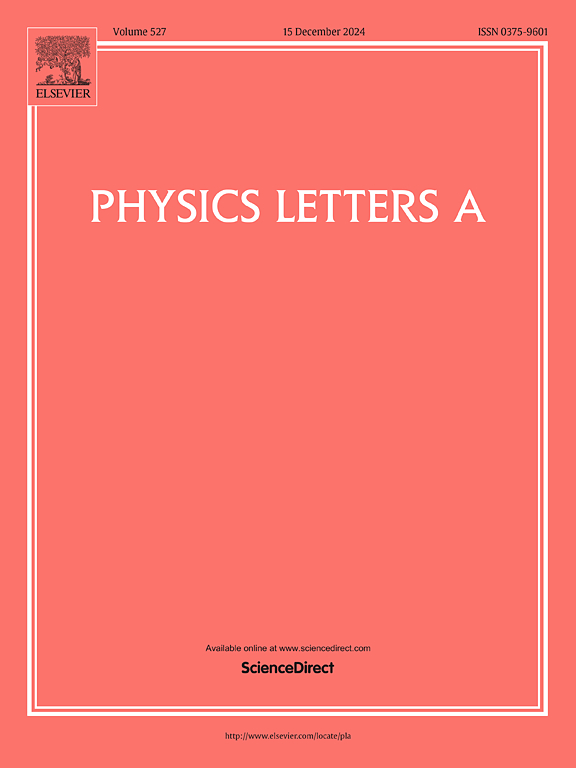liv2o5 -石墨烯异质结构中的可调谐杂化极化
IF 2.3
3区 物理与天体物理
Q2 PHYSICS, MULTIDISCIPLINARY
引用次数: 0
摘要
范德华(vdWs)异质结构中的可调谐杂化极化为先进的光学应用提供了一个灵活的平台,可以精确控制光与物质的相互作用。近年来,LiV2O5作为一种具有高介电常数的天然沟通声子材料出现。然而,现有的基于liv2o5的器件在设计上是固定的,这限制了主动可调谐声子器件的发展。在这项研究中,我们引入了一种由石墨烯纳米带与LiV2O5结构形成的异质结构,导致声子模式和表面等离子体模式之间的强耦合。我们探索电磁杂化材料的潜力,以解决个别极化的限制。在此基础上,采用三振子耦合模型系统地研究了三种杂化模式之间的能量交换、模式演化和耦合强度,结果与仿真结果非常吻合。这项工作为红外在热管理和多共振传感中的应用提供了一个简单的策略。本文章由计算机程序翻译,如有差异,请以英文原文为准。
Tunable hybrid polaritons in the LiV2O5-graphene heterostructures
The tunable hybrid polaritons in van der Waals (vdWs) heterostructures present a flexible platform for advanced optical applications, allowing precise control over light-matter interactions. Recently, LiV2O5 has emerged as a naturally canalized phonon material characterized by high dielectric permittivity. However, the existing LiV2O5-based devices are fixed in their design, which leads to limit the development of actively tunable phonon devices. In this study, we introduce a heterostructure formed by graphene nanoribbons with the LiV2O5 structure, resulting in the strong coupling between phonon modes and surface plasmon modes. We explore the potential of electromagnetic hybrid materials to address the limitations of the individual polaritons. Furthermore, we systematically investigate the energy exchange, mode evolution, and coupling strength among three hybridized modes by employing a coupled model with three oscillators, which demonstrates excellent agreement with the simulated results. This work presents a straightforward strategy for infrared applications in thermal management and multi-resonance sensing.
求助全文
通过发布文献求助,成功后即可免费获取论文全文。
去求助
来源期刊

Physics Letters A
物理-物理:综合
CiteScore
5.10
自引率
3.80%
发文量
493
审稿时长
30 days
期刊介绍:
Physics Letters A offers an exciting publication outlet for novel and frontier physics. It encourages the submission of new research on: condensed matter physics, theoretical physics, nonlinear science, statistical physics, mathematical and computational physics, general and cross-disciplinary physics (including foundations), atomic, molecular and cluster physics, plasma and fluid physics, optical physics, biological physics and nanoscience. No articles on High Energy and Nuclear Physics are published in Physics Letters A. The journal''s high standard and wide dissemination ensures a broad readership amongst the physics community. Rapid publication times and flexible length restrictions give Physics Letters A the edge over other journals in the field.
 求助内容:
求助内容: 应助结果提醒方式:
应助结果提醒方式:


